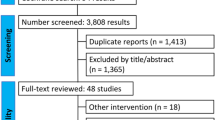Abstract
Background
This study aimed to determine the nature of complications after transabdominal preperitoneal (TAPP) hernia repair, and to evaluate possible links to intraoperative factors in an effort to reduce the incidence of complications.
Methods
The TAPP procedures for inguinal/femoral hernias performed between 1992 and 2004 at a single center were analyzed retrospectively. Complications were categorized according to severity and stage of the surgical procedure at which they occurred. Individual surgeon performances were examined to determine whether the rates of complications were related to surgeon experience.
Results
A total of 1,973 TAPP procedures were reviewed, and 81% of the patients completed 5 years of follow-up evaluation. The 74 complications (3.7%) reported were categorized as follows: 33 major (1.7%) versus 41 minor (2.0%), 66 hernia-related (3.4%) versus 8 laparoscopy-related (0.5%) complications, and 12 recurrences (0.6%). Risk factors for complications included inguinoscrotal hernia (p ≤ 0.001), dissection/reduction of the sac (p = 0.02), and surgeon experience (<50 TAPP procedures; odds ratio, 7.1; 95% confidence interval, 4.2–11.9).
Conclusions
Accuracy in dissection/reduction of the sac improves the outcome of TAPP hernia repair. This effect is related to the experience of the surgeon. Experience performing more than 75 procedures is required for optimal results.


Similar content being viewed by others
References
Berndsen F, Arvidsson D, Enander LK, Leijonmark CE, Wingren U, Rudberg C, Smedberg S, Wickbom G, Montgomery A (2002) Postoperative convalescence after inguinal hernia surgery: prospective randomized multicenter study of laparoscopic versus Shouldice inguinal hernia repair in 1042 patients. Hernia 6: 56–61
Bringman S, Blomqvist P (2005) Intestinal obstruction after inguinal and femoral hernia repair: a study of 33,275 operations during 1992–2000 in Sweden. Hernia 9: 178–183
Bueno J, Serralta A, Planells M, Rodero D (2004) Inguinodynia after two inguinal herniorrhaphy methods. Surg Laparosc Endosc Percutan Tech 14: 210–214
Catarci M, Carlini M, Gentileschi P, Santoro E (2001) Major and minor injuries during the creation of pneumoperitoneum: a multicenter study on 12,919 cases. Surg Endosc 15: 566–569
Duron J-J, Hay JM, Msika S, Gashard D, Domergue J, Gainant A, Fingerhut A (2000) Prevalence and mechanisms of small intestinal obstruction following laparoscopic abdominal surgery: a retrospective multicenter study. Arch Surg 135: 208–212
Felix E, Scott S, Crafton B, Geis P, Duncan T, Sewell R, McKernan B (1998) Causes of recurrence after laparoscopic hernioplasty: a multicenter study. Surg Endosc 12: 226–231
Leibl BJ, Schmedt CG, Kraft K, Ulrich M, Bittner R (2000) Scrotal hernias: a contraindication for an endoscopic procedure? Results of a single-institution experience in transabdominal preperitoneal repair. Surg Endosc 14: 289–292
Mahon D, Decadt B, Rhodes M (2003) Prospective randomized trial of laparoscopic (transabdominal preperitoneal) vs open (mesh) repair for bilateral and recurrent inguinal hernia. Surg Endosc 17: 1386–1390
McCormack K, Wake B, Perez J, Fraser C, Cook J, McIntosh E, Vale L, Grant A (2005) Laparoscopic surgery for inguinal hernia repair: systematic review of effectiveness and economic evaluation. Health Technol Assess 9: 1–203
Mirilas P, Colborn GL, McClusky DA III, Skandalakis LJ, Skandalakis PN, Skandalakis JE (2005) The history of anatomy and surgery of the preperitoneal space. Arch Surg 140: 90–94
Neumayer L, Giobbie-Hurder A, Jonasson O, Fitzgibbons R Jr, Dunlop D, Gibbs J, Reda D, Henderson W, Veterans Affairs Cooperative Studies Program 456 Investigators (2004) Open mesh versus laparoscopic mesh repair of inguinal hernia. N Engl J Med 350: 1819–1827
Onofrio L, Cafaro D, Manzo F, Cristiano SF, Sgromo B, Ussia G. (2004) Tension-free laparoscopic versus open inguinal hernia repair. Minerva Chir 59: 369–377
Poobalan AS, Bruce J, King PM, Chambers WA, Krukowski ZH, Smith WC (2001) Chronic pain and quality of life following open inguinal hernia repair. Br J Surg 88: 1122–1126
Quilici PJ, Greaney EM Jr, Quilici J, Anderson S (2000) Laparoscopic inguinal hernia repair: optimal technical variations and results in 1,700 cases. Am Surg 66: 848–852
Ramshaw B, Shuler FW, Jones HB, Duncan TD, White J, Wilson R, Lucas GW, Mason EM (2001) Laparoscopic inguinal hernia repair: lessons learned after 1,224 consecutive cases. Surg Endosc 15: 50–54
Rosenberg RJ, Loeweneck H, Meyer G (2000) The cutaneous nerves encountered during laparoscopic repair of inguinal hernia: new anatomical findings for the surgeon. Surg Endosc 14: 731–735
Roviaro GC, Varoli F, Saguatti L, Vergani C, Maciocco M, Scarduelli A (2002) Major vascular injuries in laparoscopic surgery. Surg Endosc 16:1192–1196
Schäfer M, Lauper M, Krähenbühl L (2001) Trocar and Veress needle injuries during laparoscopy. Surg Endosc 15: 275–280
Smith JR, Demers ML, Pollack R, Gregory S (2001) Prospective comparison between laparoscopic preperitoneal herniorrhaphy and open mesh herniorrhaphy. Am Surg 67: 115–117
Zuvela M, Milicevic M, Galun D, Lekic N, Basaric D, Tomic D, Petrovic M, Palibrk I (2005) Infection in hernia surgery. Acta Chir Iugosl 52: 9–26
Acknowledgments
The authors thank Mrs. Laura Caliari, Ms. Rowena McMenamin, Dr. Matthew Reilly, and Mr. Fabio Andreola for careful review of the manuscript. A very special thanks is extended to Mrs. Milena Ruggeri for her precious and irreplaceable help.
Author information
Authors and Affiliations
Corresponding author
Rights and permissions
About this article
Cite this article
Lovisetto, F., Zonta, S., Rota, E. et al. Laparoscopic transabdominal preperitoneal (TAPP) hernia repair: surgical phases and complications. Surg Endosc 21, 646–652 (2007). https://doi.org/10.1007/s00464-006-9031-9
Received:
Revised:
Accepted:
Published:
Issue Date:
DOI: https://doi.org/10.1007/s00464-006-9031-9




